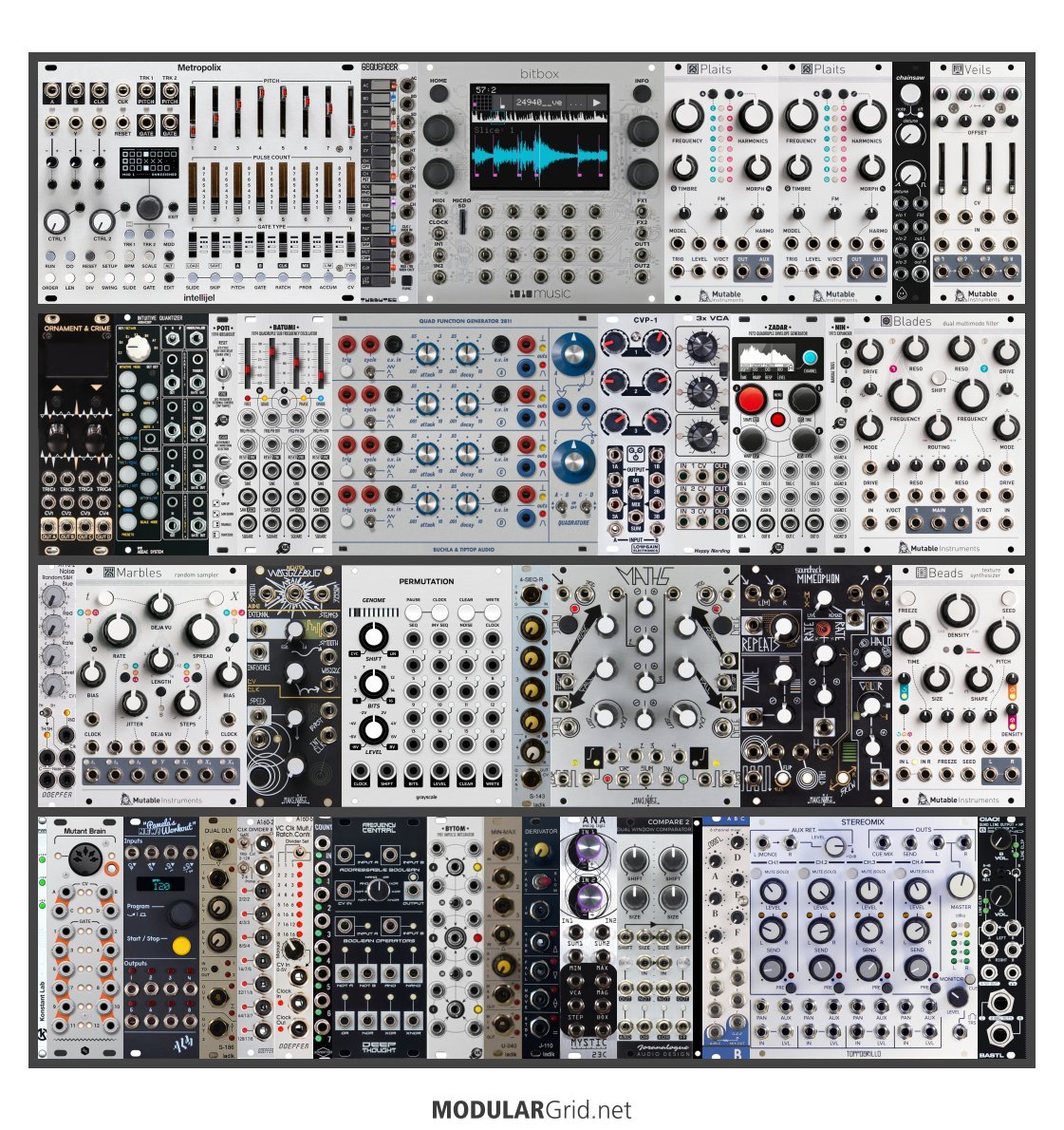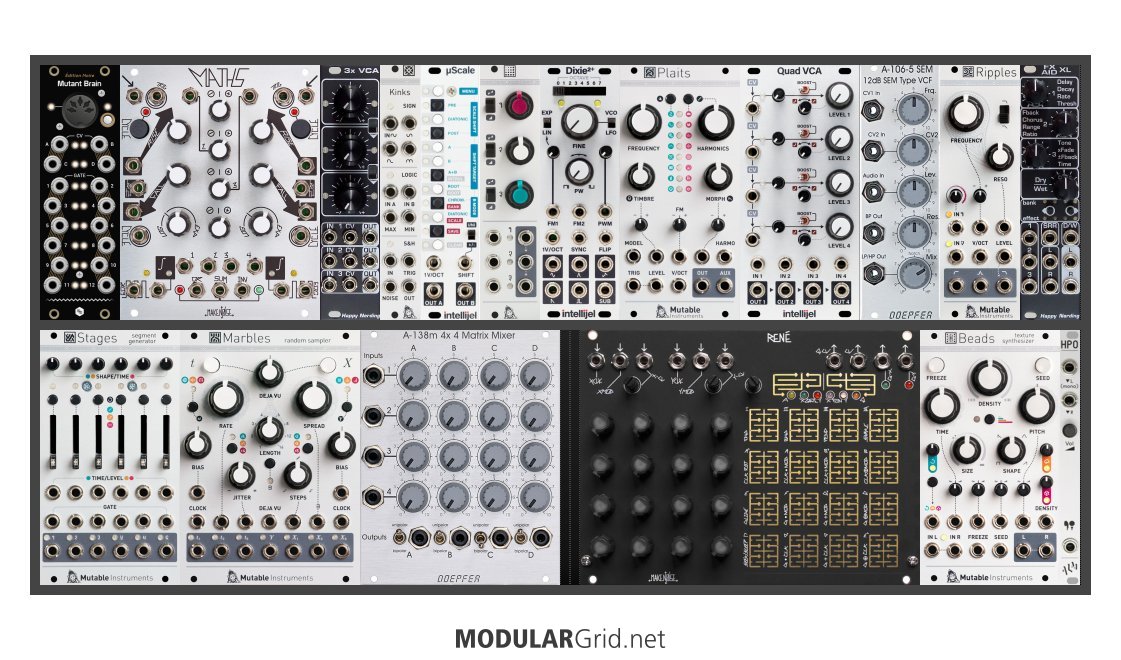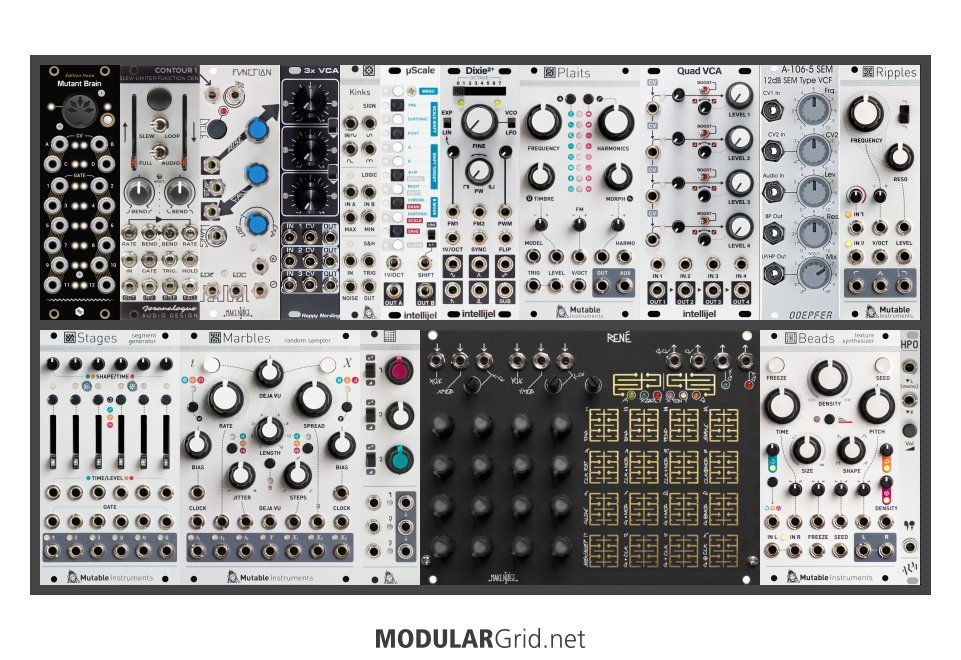Well, I think I can see what the problem is here...overall, this is a pretty good example of Sexy Module Syndrome, and the signal flow in there is going to be really convoluted if this all remains the same. Plus, there's A LOT of utilities that ought to be in there (VCAs!!!!!!).
I can see the point of the Metron. But at the same time, I think you're going to need to scale a lot of this build...Metron included...way back in terms of these huge modules. For example, it might look like a downgrade to go from the Metron to, say, this: https://www.modulargrid.net/e/tubbutec-6equencer-3u However, that Tubbutech module is pretty much the sequencer from the Roland TR-606, very workable on the fly and live, and it's got enough outputs to justify using it with the Bitbox as a dedicated trigger sequencer. If you want to go down this lane, those are the sort of choices you need to tackle...either some big module that's pretty spendy, or one that fits but isn't as glamorous.
I'm going to get back to this later tonight. I can see what the main idea is, but this will need a LOT of smackin' around to get it to make more sense...
[A few hours later...]

OK! Now, that's what I came up with. Much of it remained from your build above, but as I noted earlier, I did wind up having to pull some modules outright. Even so, this was a sizable PITA to work out because not all of those big modules could be dropped. However, most of those were retooled with smaller yet about as functional modules.
TOP: I put the main sequencers plus the Bitbox up top. The Bitbox needed to be located by the Tubbutech 606 sequencer for ease of use. Then we get into the oscillators; you'll notice a second Plaits, for starters. This is because while 1 VCO might be fat, 2 VCOs becomes downright obese! And that's all thanks to detuning one of a pair of VCOs slightly...ergo, two Plaits. Then the supersaw oscillator, and a Veils so that you can have amplitude control over those oscillators. Since the Veils has a "breakable" mixbus, you can mix the Plaits on VCAs 1 and 2 and sum that down to mono at output 2, while the Chainsaw would use VCAs 3 and 4, outputted directly so that you can maintain the Chainsaw's stereo field.
SECOND: Modulation and other things. You have the O&c first, then an ADDAC Intuitive Quantizer, which is a four-voice quantizer with user-definable scales and some rather comprehensive capabilities. This, of course, replaces the Sinfonion which frankly had a number of features that weren't needed here, such as a chordal engine, etc. It's also WAY smaller and WAY cheaper. After that, there's a Xaoc Batumi + Poti for 4 LFOs, then the soon-to-come Buchla (by Tiptop) 281t quad function generator. Think "Quadrax" but with a number of extra tricks, such as the quadrature functions and some useful internal signal mixing. Cheaper than a Quadrax, too. I went with a Lowgain CVP1 for the modulation mixing/processing and a Happy Nerding 3xVCA for modulation amplitude control. Last in the modulation is a Xaoc Zadar + Nin with four EGs, then Mutable's Blades dual VCF, which is actually part of the voicing...but the Metropolix forced that onto this row.
THIRD: First up is a little Doepfer multimodule, which in this case contains your noise source (with fixed filtering), random source, and sample or track-and-hold. This also gives Marbles some noise to chew on. Wogglebug's after that, and then a full-on Permutation completes the random-source section. After that, you'll notice a little 4-step CV sequencer...this is to deal with the loss of transposition capability that the Sinfonion had. By setting up your changes on this little sequencer, you can globally alter the key of the Metropolix or most anything else. Next is Maths, then your Mimeophon and Beads, located above the mixer for convenience.
BOTTOM: Added a PWRchekr at left, then the Mutant Brain and Pam's. And then the pile of little modules is a full-on timing and event extraction setup, which is going to be pretty necessary for making all of the sequencers jump around nicely...it works like this: First module is a dual trig/gate delay. A second pulse divider (the main ones are in the Pam's) then allows for some strange numerical series in division. The compliment to this, the Multiplier/Ratchet Gen, is next, then a small module from Adventure Audio lets you pick off per-count trig/gates. And the key to this entire section is next, a Frequency Central Deep Thought, which is a Boolean logic module. Boolean logic is essential to getting some rather complex time alterations, since they take in two pulse signals and, depending on the gate type, can output a gate based on the coincidence of pulses...or not. It all depends on which gate you use and what you feed it with. After the logic, there's a Xaoc pulse summer, then a module to calculate the minimum and maximum across up to four inputted voltages, followed by a Derivator that outputs several gates, all dependent on voltage motion. The ANA then carries out some math operations on incoming voltages, and lastly there's a Joranalogue Dual Window Comparator...these output a gate when certain voltage thresholds are crossed, and since this is a window comparator, you get more than just the one threshold crossing. After all of the timing modules, the Bastl ABC works as an extra dual submixer to sum signals before passing them on to the mixer, a Toppobrillo Stereomix2. This mixer has your final VCAs for level, but also can pan and set AUX send levels via CV as well. This also has a CUE function for the headphone preamp, which is a godsend if you have to retune on the fly. Mono AUX send, stereo return...but only one of the latter, which is why I put the Bastl Ciao! in, as it has a second stereo in that can be mixed with the Stereomix2's output, letting you use both the Mimeophon AND Beads in parallel routing...which gives you a lot more control over the mix between your dry and wet signals. This also gives you a second headphone preamp, a few more metering LEDs, and your 1/4" stereo output pair.
This wasn't exactly fun, however...with much of the blame going to the case itself. It could be possible to get all of those big modules back in there along with much of the changes you see here, and then some. But sticking with this 4 x 104 cab is a definite drawback; I'd rather see a bit LESS density here, tbh, as I think this might have some ergonomics issues. But the main thrust here was to provide an alternate example, with errors corrected and some new concepts tossed in. However, if you took this to 120 or 126 x 4, it would be possible to reduce the number of tiny modules, which would make this a bit easier to program. Still, it's not THAT far off the mark.


